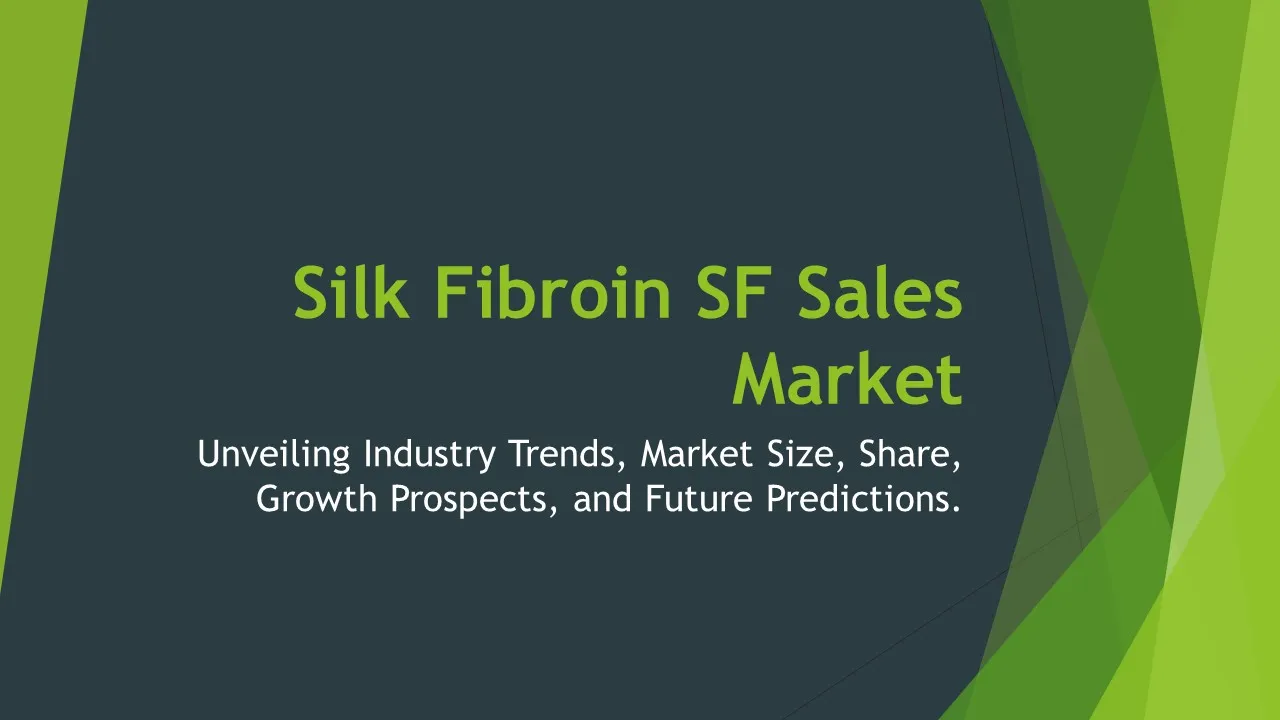Acromegaly and Gigantism Drugs
Acromegaly and Gigantism Drugs Market Segments - by Drug Type (Somatostatin Analogs, Growth Hormone Receptor Antagonists, Dopamine Agonists, Insulin-like Growth Factor-1 Inhibitors, and Others), Distribution Channel (Hospitals, Retail Pharmacies, Online Pharmacies, and Others), End-User (Hospitals, Specialty Clinics, and Others), and Region (North America, Europe, Asia Pacific, Latin America, and Middle East & Africa) - Global Industry Analysis, Growth, Share, Size, Trends, and Forecast 2025-2035
- Report Preview
- Table Of Content
- Segments
- Methodology
Acromegaly and Gigantism Drugs Market Outlook
The global Acromegaly and Gigantism Drugs market is anticipated to reach a valuation of approximately USD 2.1 billion by 2035, with a compound annual growth rate (CAGR) of around 6.2% during the forecast period of 2025-2035. The growing prevalence of acromegaly and gigantism, along with the increasing awareness about rare endocrine disorders, is driving the market’s growth. Additionally, advancements in drug formulations and the introduction of novel therapies are enhancing treatment options, thereby contributing to the overall market expansion. The increasing investments in healthcare infrastructure, particularly in developing regions, help facilitate better access to treatment. Furthermore, rising healthcare expenditure and the growing demand for personalized medicine are expected to favorably influence market dynamics.
Growth Factor of the Market
The Acromegaly and Gigantism Drugs market is experiencing robust growth primarily due to the rising incidence of these rare disorders. Acromegaly, predominantly caused by pituitary adenomas, affects hormone secretion and has significant long-term health implications if left untreated. Awareness campaigns and educational initiatives are shedding light on the symptoms and risks associated with these disorders, leading to earlier diagnosis and treatment. With the introduction of targeted therapies, patients are now experiencing improved outcomes, which drives the demand for these medications. Moreover, the increasing emphasis on research and development, coupled with technological advancements in drug delivery systems, is likely to propel market growth further. The collaboration between pharmaceutical companies and research institutions also contributes to the innovation of more effective treatment options.
Key Highlights of the Market
- The global Acromegaly and Gigantism Drugs market is projected to grow significantly at a CAGR of 6.2% from 2025 to 2035.
- Somatostatin analogs are the leading drug type in terms of market share.
- North America dominates the market, accounting for over 40% of the total market share.
- Online pharmacies are gaining traction as a distribution channel, driven by convenience and digital transformation.
- The specialty clinics segment is anticipated to exhibit the highest growth rate among end-users during the forecast period.
By Drug Type
Somatostatin Analogs:
Somatostatin analogs play a crucial role in managing acromegaly and gigantism by mimicking the effects of natural somatostatin, a hormone that inhibits growth hormone secretion. These drugs, including octreotide and lanreotide, effectively reduce growth hormone levels and control the symptoms associated with these disorders. The increasing preference for injectable formulations has enhanced the adoption of somatostatin analogs. With ongoing research aimed at improving their efficacy and reducing side effects, this drug type is expected to maintain its dominance in the market. The favorable reimbursement policies and the availability of long-acting formulations also contribute to the growth of somatostatin analogs, making them a preferred choice for both patients and healthcare providers.
Growth Hormone Receptor Antagonists:
Growth hormone receptor antagonists are another significant segment within the Acromegaly and Gigantism Drugs market. The most notable drug in this category is pegvisomant, which works by blocking the action of growth hormone at the receptor level, effectively managing the symptoms and complications associated with these disorders. This therapeutic approach is particularly beneficial for patients who do not respond adequately to somatostatin analogs. The increasing incidence of drug-resistant cases of acromegaly is driving the adoption of growth hormone receptor antagonists. With ongoing clinical studies highlighting their safety and efficacy, growth hormone receptor antagonists are poised to capture a larger market share in the coming years.
Dopamine Agonists:
Dopamine agonists are utilized as a second-line treatment option for patients with acromegaly, particularly those who have an inadequate response to somatostatin analogs. Medications such as cabergoline and bromocriptine stimulate dopamine receptors, which in turn inhibit growth hormone secretion. Although their market share is relatively smaller compared to somatostatin analogs, dopamine agonists offer a viable treatment option for patients with specific clinical profiles. The increasing awareness of these drugs among healthcare professionals is expected to enhance their adoption. Additionally, ongoing research into the long-term effects and benefits of dopamine agonists may provide further insights, potentially leading to expanded indications and improved treatment outcomes.
Insulin-like Growth Factor-1 Inhibitors:
Insulin-like Growth Factor-1 (IGF-1) inhibitors represent a newer class of medications that target the downstream effects of growth hormone. These drugs, such as tepotinib, work by inhibiting the action of IGF-1, which plays a significant role in the growth and proliferation of cells. As research continues to unveil the benefits of IGF-1 inhibitors, they are anticipated to emerge as effective treatment alternatives, especially for patients with resistant or advanced acromegaly. The growing body of clinical evidence supporting the safety and efficacy of IGF-1 inhibitors is likely to bolster their market presence. With the increasing focus on personalized medicine, these inhibitors may provide tailored treatment options that align with individual patient needs.
Others:
The "Others" segment encompasses a range of emerging therapies and investigational drugs that target acromegaly and gigantism. This category includes novel compounds and combination therapies currently undergoing clinical trials and research. Although not yet widely available in the market, these innovative treatments hold promise for the future of acromegaly management. The continuous advancements in biotechnology and pharmaceutical research are likely to yield new therapeutic options. The demand for alternative treatment strategies, driven by the need for individualized care, is expected to spur further development in this area. As these drugs progress through the regulatory pipeline, they may add significant value to the overall market landscape.
By Distribution Channel
Hospitals:
Hospitals are a primary distribution channel for Acromegaly and Gigantism Drugs, serving as key healthcare facilities where patients receive diagnosis, treatment, and ongoing management of their conditions. The centralized nature of hospitals allows for the incorporation of specialized endocrinology departments, which are crucial for patient care. Hospitals often have access to a broader range of medications and can provide comprehensive treatment plans that may include surgical interventions in addition to pharmacological therapies. The establishment of multidisciplinary teams within hospitals, comprising endocrinologists, surgeons, and nurses, enhances the quality of care for patients with acromegaly and gigantism. As healthcare systems continue to evolve and invest in hospital infrastructure, this distribution channel is expected to remain robust.
Retail Pharmacies:
Retail pharmacies serve as a vital distribution channel for Acromegaly and Gigantism Drugs, providing patients with accessible options for obtaining their medications. The convenience and ease of access offered by retail pharmacies play a key role in ensuring medication adherence among patients. Furthermore, retail pharmacies often provide counseling and support services, enhancing patient engagement with their treatment plans. With the ongoing trend of retail pharmacies expanding their services to include health screenings and chronic disease management programs, they are increasingly becoming integral to the healthcare delivery system. The solid growth of retail pharmacies, supported by consumer preference for convenient healthcare services, is expected to significantly contribute to the market for acromegaly and gigantism drugs.
Online Pharmacies:
The rise of online pharmacies has introduced a transformative approach to the distribution of Acromegaly and Gigantism Drugs. This distribution channel offers unparalleled convenience for patients, allowing them to order medications from the comfort of their homes. Online pharmacies often provide competitive pricing and access to a wide range of products, which can enhance patient choice. The growth of telemedicine and digital health platforms has further accelerated the adoption of online pharmacies, enabling healthcare providers to prescribe medications remotely. However, the market's regulatory environment continues to evolve, necessitating that online pharmacies adhere to stringent safety and quality standards. As consumer trust in online pharmacies increases, their share in the pharmaceutical distribution landscape is expected to grow.
Others:
Other distribution channels encompass various alternative methods through which Acromegaly and Gigantism Drugs can be accessed. This includes specialty pharmacies, which focus on providing medications for complex and chronic conditions, ensuring patients receive the necessary support and education regarding their treatment. Additionally, patient assistance programs and direct-to-consumer marketing strategies are crucial in facilitating access to these medications. The emergence of mobile health applications and e-commerce platforms is also reshaping the way patients obtain their prescriptions, providing expedited services and enhancing accessibility. As the healthcare landscape continues to evolve, these alternative distribution channels are likely to play an increasingly important role in the overall market.
By User
Hospitals:
Hospitals represent a significant user segment for Acromegaly and Gigantism Drugs, as they are the primary setting for diagnosis and treatment of these conditions. The multidisciplinary care model adopted by hospitals allows for comprehensive management, including surgical options, medication management, and ongoing patient monitoring. Hospitals not only offer a wide array of medications but also have the necessary infrastructure to provide advanced diagnostic tools and treatments. The integration of endocrinology specialists within hospital systems ensures that patients receive expert care tailored to their specific needs. The increasing number of patients diagnosed with acromegaly and gigantism further solidifies the hospital’s position as a crucial user of these pharmaceuticals, contributing significantly to the overall market growth.
Specialty Clinics:
Specialty clinics focus on the management of specific health conditions, including endocrine disorders like acromegaly and gigantism. These clinics often employ endocrinologists and other healthcare professionals who specialize in hormonal disorders, providing patients with targeted care. The personalized approach to treatment in specialty clinics allows for tailored medication regimens and ongoing support. As the demand for specialized healthcare services continues to rise, specialty clinics are becoming increasingly significant in the distribution of acromegaly and gigantism drugs. The emphasis on patient-centered care and the provision of comprehensive treatment plans enhance the clinic’s attractiveness to patients. This segment is poised for growth as more patients seek expert care for their conditions.
Others:
The "Others" segment includes various healthcare settings, such as outpatient centers and home health care services, that also contribute to the usage of Acromegaly and Gigantism Drugs. These facilities often cater to patients with chronic conditions, offering ongoing management and support services. Outpatient centers provide an alternative for patients who require regular follow-ups and medication adjustments without the need for hospital admission. Home healthcare services are becoming increasingly popular, as they allow patients to receive treatment in a familiar environment. This trend is particularly relevant for patients managing chronic conditions like acromegaly and gigantism, where consistent follow-up and adherence to medication are critical. The diversification of healthcare services continues to reshape the user landscape, providing more options for patients.
By Region
North America dominates the Acromegaly and Gigantism Drugs market, accounting for over 40% of the total market share. The region's robust healthcare infrastructure, advanced research capabilities, and high prevalence of endocrine disorders contribute to this leading position. The United States, in particular, showcases a wide array of treatment options and ongoing clinical research, further supporting market growth. With a CAGR of 6.5%, North America is expected to continue its growth trajectory, driven by increasing investment in healthcare and the availability of innovative therapies. The presence of numerous pharmaceutical companies and research institutions further enhances the market's potential in this region.
Europe follows closely, holding a substantial market share, driven by a well-established healthcare system and a growing focus on rare diseases. The European market benefits from strong regulatory frameworks that encourage drug innovation and availability. Additionally, increasing awareness regarding acromegaly and gigantism is leading to higher diagnosis rates and subsequently greater demand for therapies. The market in Europe is expected to register a CAGR of around 5.8% during the forecast period, fueled by a rise in collaboration between pharmaceutical companies and healthcare providers to enhance treatment access. Meanwhile, the Asia Pacific region is witnessing rapid growth, fueled by an increasing population and a rising focus on healthcare improvements.
Opportunities
The Acromegaly and Gigantism Drugs market presents significant opportunities for stakeholders due to the increasing prevalence of these conditions globally. With a growing population that increasingly develops endocrine disorders, there is a rising need for effective management strategies and treatment options. Advancements in biotechnology and pharmaceutical research are paving the way for innovative therapies, including biologics and targeted treatments that can improve clinical outcomes for patients. Collaborations between pharmaceutical companies and research institutions are expected to lead to the development of novel compounds and combination therapies, thus expanding the treatment landscape. Furthermore, the rise of telemedicine and digital health solutions offers new avenues for patient engagement and medication adherence, which can enhance treatment efficacy and patient satisfaction.
Another notable opportunity lies in the expansion of healthcare infrastructure, particularly in emerging markets. Countries in the Asia Pacific and Latin America are witnessing improvements in healthcare accessibility and affordability, creating a favorable environment for the introduction of acromegaly and gigantism treatments. Moreover, the increasing emphasis on personalized medicine is likely to transform treatment approaches, allowing for tailored therapies that address individual patient needs. The growing trend towards patient-centered care, combined with advancements in drug development and delivery systems, presents a unique opportunity for pharmaceutical companies to establish themselves as leaders in this niche market.
Threats
Despite the promising growth prospects, the Acromegaly and Gigantism Drugs market faces several threats that could hinder its development. One of the primary concerns is the high cost of treatment, which can limit patient access to necessary medications and create disparities in healthcare outcomes. The financial burden associated with long-term therapies may lead to lower adherence rates, undermining treatment efficacy. Additionally, the complexity of managing these rare disorders requires specialized knowledge and skills, and there may be a shortage of trained healthcare professionals in certain regions, particularly in developing countries. Furthermore, the emergence of generics and biosimilars can create pricing pressures within the market, leading to increased competition and reduced profit margins for branded medications.
Another challenge lies in the regulatory landscape, as pharmaceutical companies must navigate stringent approval processes to bring new drugs to market. Delays in regulatory approvals can slow innovation and hinder access to cutting-edge therapies for patients. Moreover, the evolving nature of healthcare policies and reimbursement frameworks can impact the overall market dynamics. As health systems work towards cost containment and value-based care models, pharmaceutical companies may need to adapt their strategies to align with these changing priorities. The potential for adverse events or drug interactions also raises concerns, emphasizing the need for comprehensive post-marketing surveillance and monitoring to ensure patient safety.
Competitor Outlook
- Novartis AG
- Pfizer Inc.
- Ipsen S.A.
- Horizon Therapeutics plc
- Amgen Inc.
- Recordati S.p.A.
- Teva Pharmaceutical Industries Ltd.
- Sanofi S.A.
- Merck & Co., Inc.
- Unither Pharmaceuticals
- Sumitomo Dainippon Pharma Co., Ltd.
- Hikma Pharmaceuticals PLC
- Sandoz (a Novartis division)
- Proacta Inc.
- Beckman Coulter, Inc.
The competitive landscape of the Acromegaly and Gigantism Drugs market is characterized by the presence of several key players striving for market share through innovative therapies and strategic collaborations. Novartis AG, known for its leading somatostatin analog products, holds a significant position in the market. The company's continuous investment in research and development has enabled it to maintain its competitive edge by offering advanced treatment options tailored to patient needs. In addition to Novartis, Ipsen S.A. and Pfizer Inc. have also established themselves as formidable competitors with their unique product portfolios and cutting-edge research initiatives focused on endocrine disorders. The emphasis on collaboration and partnerships with research institutions is likely to further strengthen their market presence.
Horizon Therapeutics plc and Amgen Inc. are also notable players in the market, focusing on innovative drug development and personalized treatment approaches for acromegaly and gigantism. Their commitment to addressing patient needs through tailored therapies has garnered attention and support from healthcare professionals and patients alike. Moreover, companies like Recordati S.p.A. and Teva Pharmaceutical Industries Ltd. are expanding their offerings in the market, contributing to a diverse range of treatment options. As competition intensifies, these companies are likely to engage in strategic alliances, mergers, and acquisitions to enhance their market positioning and access to new technologies.
The growing trend of patient-centric care and the emphasis on improving treatment outcomes present significant opportunities for companies engaged in this market. As healthcare providers and patients increasingly seek effective and convenient treatment options, pharmaceutical companies must prioritize innovation and adapt their strategies accordingly. The introduction of biosimilars and generics may also impact the competitive landscape, providing an opportunity for smaller players to enter the market and offer cost-effective alternatives. Overall, the Acromegaly and Gigantism Drugs market is poised for substantial growth, driven by a combination of innovative therapies, strategic partnerships, and a focus on patient-centered care.
1 Appendix
- 1.1 List of Tables
- 1.2 List of Figures
2 Introduction
- 2.1 Market Definition
- 2.2 Scope of the Report
- 2.3 Study Assumptions
- 2.4 Base Currency & Forecast Periods
3 Market Dynamics
- 3.1 Market Growth Factors
- 3.2 Economic & Global Events
- 3.3 Innovation Trends
- 3.4 Supply Chain Analysis
4 Consumer Behavior
- 4.1 Market Trends
- 4.2 Pricing Analysis
- 4.3 Buyer Insights
5 Key Player Profiles
- 5.1 Amgen Inc.
- 5.1.1 Business Overview
- 5.1.2 Products & Services
- 5.1.3 Financials
- 5.1.4 Recent Developments
- 5.1.5 SWOT Analysis
- 5.2 Ipsen S.A.
- 5.2.1 Business Overview
- 5.2.2 Products & Services
- 5.2.3 Financials
- 5.2.4 Recent Developments
- 5.2.5 SWOT Analysis
- 5.3 Novartis AG
- 5.3.1 Business Overview
- 5.3.2 Products & Services
- 5.3.3 Financials
- 5.3.4 Recent Developments
- 5.3.5 SWOT Analysis
- 5.4 Pfizer Inc.
- 5.4.1 Business Overview
- 5.4.2 Products & Services
- 5.4.3 Financials
- 5.4.4 Recent Developments
- 5.4.5 SWOT Analysis
- 5.5 Sanofi S.A.
- 5.5.1 Business Overview
- 5.5.2 Products & Services
- 5.5.3 Financials
- 5.5.4 Recent Developments
- 5.5.5 SWOT Analysis
- 5.6 Proacta Inc.
- 5.6.1 Business Overview
- 5.6.2 Products & Services
- 5.6.3 Financials
- 5.6.4 Recent Developments
- 5.6.5 SWOT Analysis
- 5.7 Recordati S.p.A.
- 5.7.1 Business Overview
- 5.7.2 Products & Services
- 5.7.3 Financials
- 5.7.4 Recent Developments
- 5.7.5 SWOT Analysis
- 5.8 Merck & Co., Inc.
- 5.8.1 Business Overview
- 5.8.2 Products & Services
- 5.8.3 Financials
- 5.8.4 Recent Developments
- 5.8.5 SWOT Analysis
- 5.9 Beckman Coulter, Inc.
- 5.9.1 Business Overview
- 5.9.2 Products & Services
- 5.9.3 Financials
- 5.9.4 Recent Developments
- 5.9.5 SWOT Analysis
- 5.10 Unither Pharmaceuticals
- 5.10.1 Business Overview
- 5.10.2 Products & Services
- 5.10.3 Financials
- 5.10.4 Recent Developments
- 5.10.5 SWOT Analysis
- 5.11 Horizon Therapeutics plc
- 5.11.1 Business Overview
- 5.11.2 Products & Services
- 5.11.3 Financials
- 5.11.4 Recent Developments
- 5.11.5 SWOT Analysis
- 5.12 Hikma Pharmaceuticals PLC
- 5.12.1 Business Overview
- 5.12.2 Products & Services
- 5.12.3 Financials
- 5.12.4 Recent Developments
- 5.12.5 SWOT Analysis
- 5.13 Sandoz (a Novartis division)
- 5.13.1 Business Overview
- 5.13.2 Products & Services
- 5.13.3 Financials
- 5.13.4 Recent Developments
- 5.13.5 SWOT Analysis
- 5.14 Sumitomo Dainippon Pharma Co., Ltd.
- 5.14.1 Business Overview
- 5.14.2 Products & Services
- 5.14.3 Financials
- 5.14.4 Recent Developments
- 5.14.5 SWOT Analysis
- 5.15 Teva Pharmaceutical Industries Ltd.
- 5.15.1 Business Overview
- 5.15.2 Products & Services
- 5.15.3 Financials
- 5.15.4 Recent Developments
- 5.15.5 SWOT Analysis
- 5.1 Amgen Inc.
6 Market Segmentation
- 6.1 Acromegaly and Gigantism Drugs Market, By User
- 6.1.1 Hospitals
- 6.1.2 Specialty Clinics
- 6.1.3 Others
- 6.2 Acromegaly and Gigantism Drugs Market, By Drug Type
- 6.2.1 Somatostatin Analogs
- 6.2.2 Growth Hormone Receptor Antagonists
- 6.2.3 Dopamine Agonists
- 6.2.4 Insulin-like Growth Factor-1 Inhibitors
- 6.2.5 Others
- 6.3 Acromegaly and Gigantism Drugs Market, By Distribution Channel
- 6.3.1 Hospitals
- 6.3.2 Retail Pharmacies
- 6.3.3 Online Pharmacies
- 6.3.4 Others
- 6.1 Acromegaly and Gigantism Drugs Market, By User
7 Competitive Analysis
- 7.1 Key Player Comparison
- 7.2 Market Share Analysis
- 7.3 Investment Trends
- 7.4 SWOT Analysis
8 Research Methodology
- 8.1 Analysis Design
- 8.2 Research Phases
- 8.3 Study Timeline
9 Future Market Outlook
- 9.1 Growth Forecast
- 9.2 Market Evolution
10 Geographical Overview
- 10.1 Europe - Market Analysis
- 10.1.1 By Country
- 10.1.1.1 UK
- 10.1.1.2 France
- 10.1.1.3 Germany
- 10.1.1.4 Spain
- 10.1.1.5 Italy
- 10.1.1 By Country
- 10.2 Asia Pacific - Market Analysis
- 10.2.1 By Country
- 10.2.1.1 India
- 10.2.1.2 China
- 10.2.1.3 Japan
- 10.2.1.4 South Korea
- 10.2.1 By Country
- 10.3 Latin America - Market Analysis
- 10.3.1 By Country
- 10.3.1.1 Brazil
- 10.3.1.2 Argentina
- 10.3.1.3 Mexico
- 10.3.1 By Country
- 10.4 North America - Market Analysis
- 10.4.1 By Country
- 10.4.1.1 USA
- 10.4.1.2 Canada
- 10.4.1 By Country
- 10.5 Middle East & Africa - Market Analysis
- 10.5.1 By Country
- 10.5.1.1 Middle East
- 10.5.1.2 Africa
- 10.5.1 By Country
- 10.6 Acromegaly and Gigantism Drugs Market by Region
- 10.1 Europe - Market Analysis
11 Global Economic Factors
- 11.1 Inflation Impact
- 11.2 Trade Policies
12 Technology & Innovation
- 12.1 Emerging Technologies
- 12.2 AI & Digital Trends
- 12.3 Patent Research
13 Investment & Market Growth
- 13.1 Funding Trends
- 13.2 Future Market Projections
14 Market Overview & Key Insights
- 14.1 Executive Summary
- 14.2 Key Trends
- 14.3 Market Challenges
- 14.4 Regulatory Landscape
Segments Analyzed in the Report
The global Acromegaly and Gigantism Drugs market is categorized based on
By Drug Type
- Somatostatin Analogs
- Growth Hormone Receptor Antagonists
- Dopamine Agonists
- Insulin-like Growth Factor-1 Inhibitors
- Others
By Distribution Channel
- Hospitals
- Retail Pharmacies
- Online Pharmacies
- Others
By User
- Hospitals
- Specialty Clinics
- Others
By Region
- North America
- Europe
- Asia Pacific
- Latin America
- Middle East & Africa
Key Players
- Novartis AG
- Pfizer Inc.
- Ipsen S.A.
- Horizon Therapeutics plc
- Amgen Inc.
- Recordati S.p.A.
- Teva Pharmaceutical Industries Ltd.
- Sanofi S.A.
- Merck & Co., Inc.
- Unither Pharmaceuticals
- Sumitomo Dainippon Pharma Co., Ltd.
- Hikma Pharmaceuticals PLC
- Sandoz (a Novartis division)
- Proacta Inc.
- Beckman Coulter, Inc.
- Publish Date : Jan 21 ,2025
- Report ID : PH-65521
- No. Of Pages : 100
- Format : |
- Ratings : 4.5 (110 Reviews)









